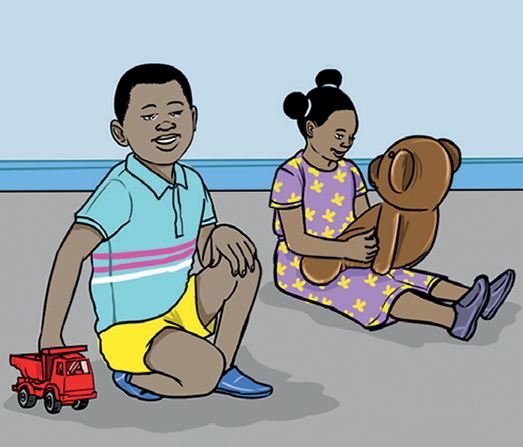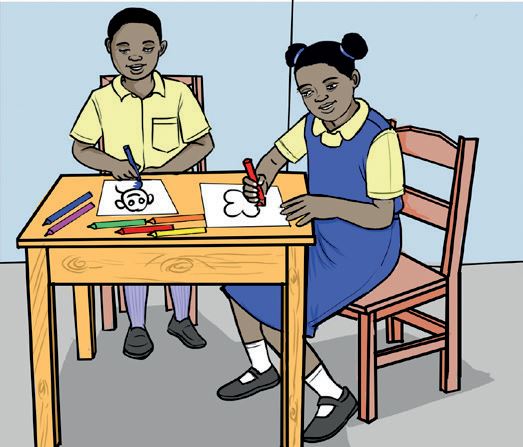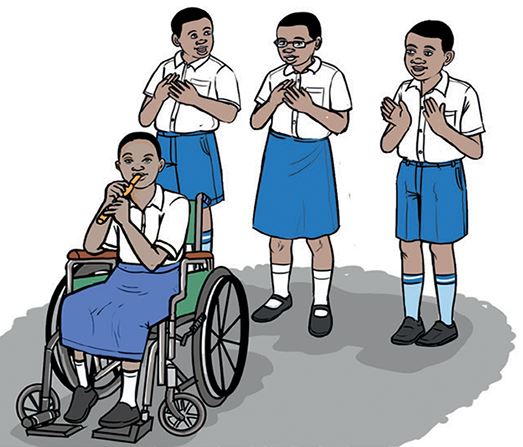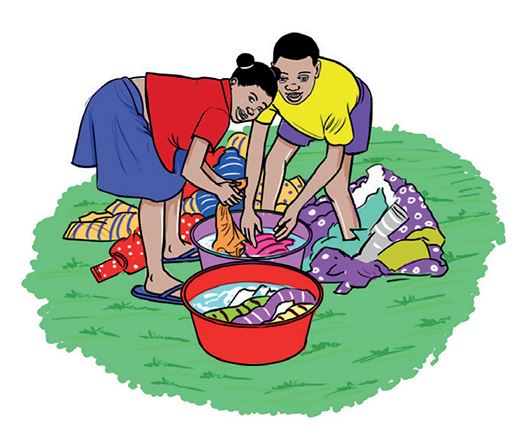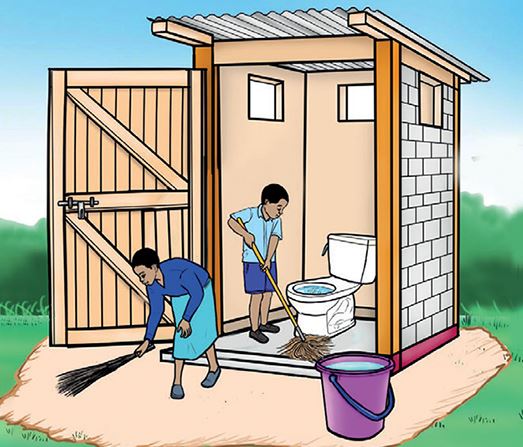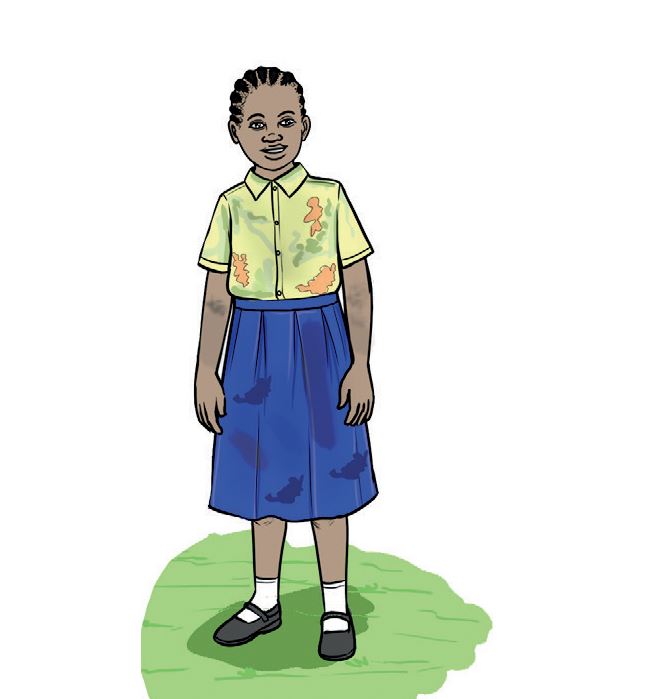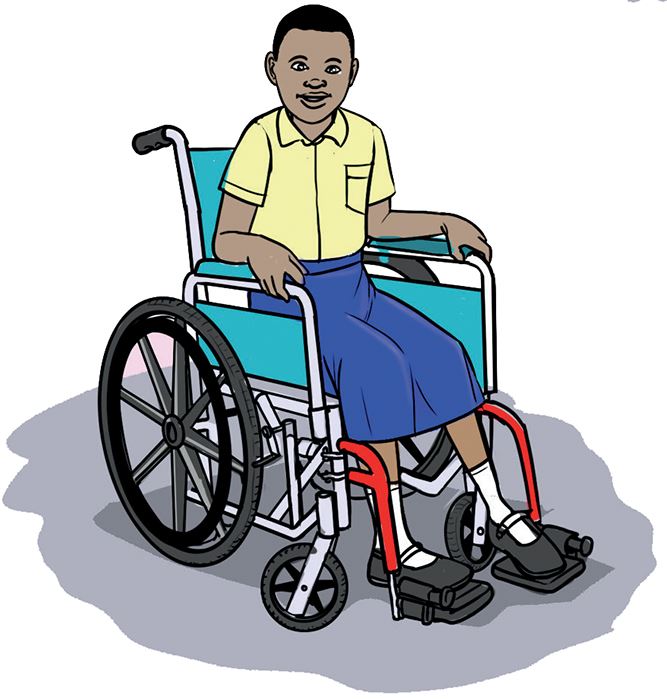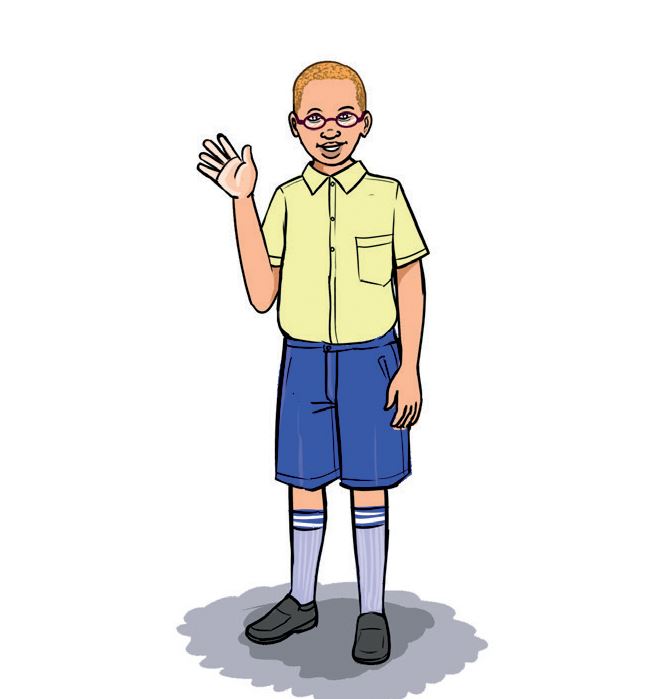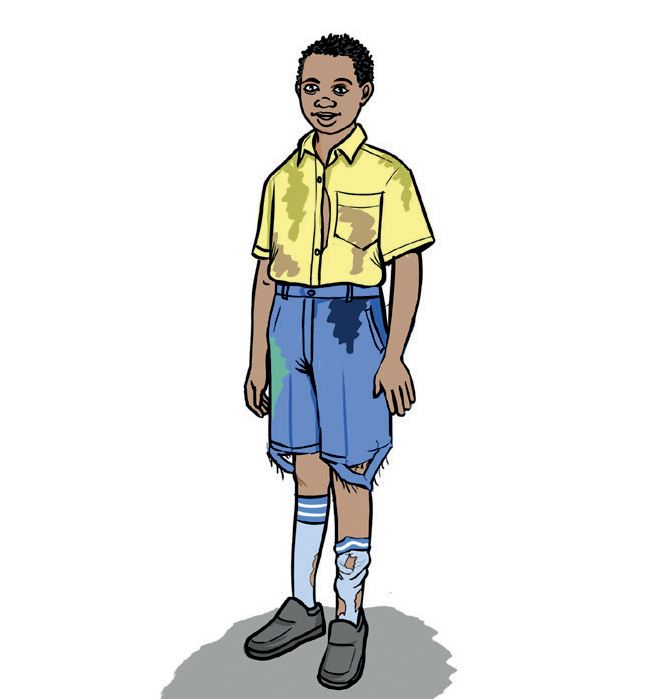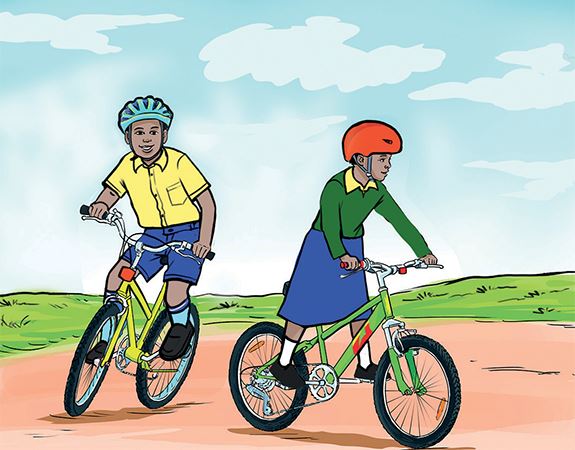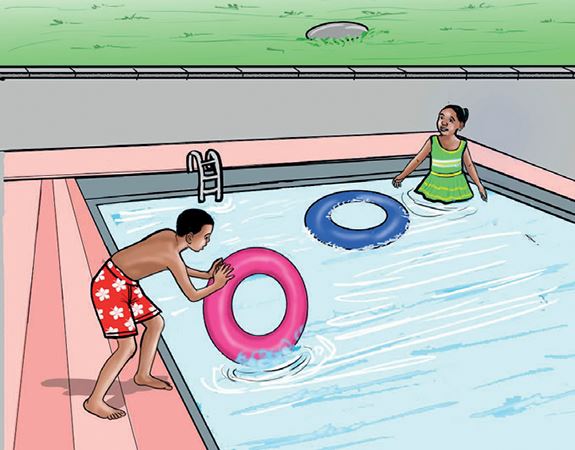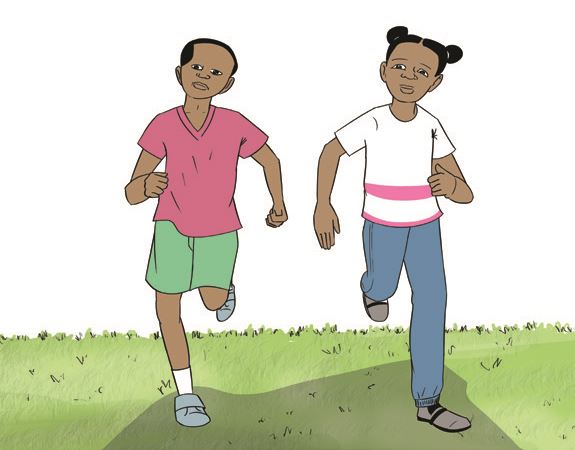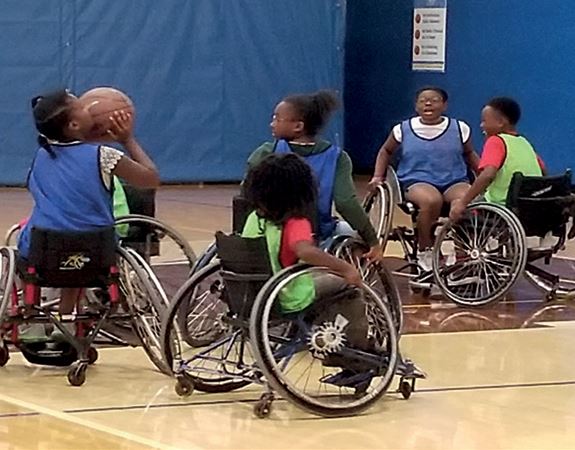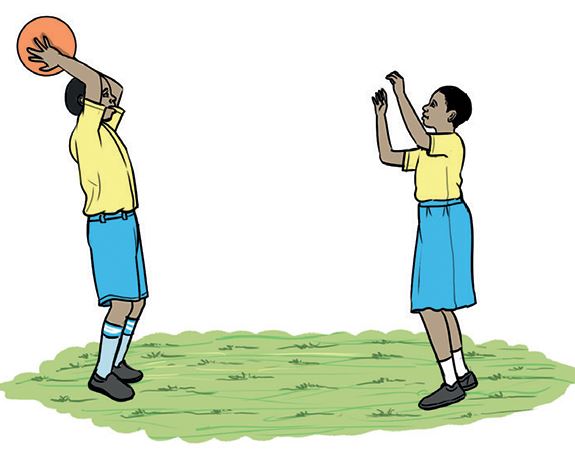Growth and development
- What is happening in each picture?
- Why do you think Rahab and John are able to do more activities as they grow?
- What chores do you do at home?
- What responsibilities are you not allowed to handle at home or at school?
- In groups, search on the internet for the meaning of the terms pre-teen or pre-adolescence. Share your findings with the class.
Notes
- A pre-adolescent is a child between the ages of 9 and 12 years.
- A pre-adolescent is no longer a little child, but not quite a teenager. They are in between the two age groups.
- A child in this age bracket is also called a pre-teen.
- Physical, mental and social changes take place during the pre-teen years.
Changes that take place during pre-adolescence
Activity 2
Read the following dialogue in pairs.
On their way to school, Osogo and Kirui talked about the body changes they had recently begun experiencing.
Osogo: | Over the past few months, I have gained some weight. My parents had to buy me a new uniform. |
Kirui: | I have had a similar experience. I am heavier and taller. How do you like my new uniform and shoes? |
Osogo: | You look very smart! I am also growing hair under my armpits. |
Kirui: | I am also experiencing similar changes. At rst, I was worried but my mother told me that this is normal. She said that I have to take extra care with personal hygiene. She advised me to have a bath, brush my teeth and wear clean clothes every day! |
Osogo: | My father advised me to do the same. Sometimes, I do not understand myself. I can be happy and easy but after a while, I feel sad. I cannot explain why this happens. |
Kirui: | Same with me! In my case, I can easily pick quarrels with friends. This has been happening a lot lately! This worries me alot. |
Osogo: | We should be more aware of our feelings. It is not fair to always quarrel and argue with our friends. |
Kirui: | That is true. We should also apologise when we are on the wrong. Our friends may not always understand our behaviour. |
Osogo: | I will talk to the guidance teacher later today. I need her advice. She also has these informative charts about growing boys and girls in her office. They are interesting to look at. |
Kirui: | I will go with you. I have a few questions of my own that I need to ask her. She always has answers to our questions. She is very kind and always ready to listen to us and offer help. |
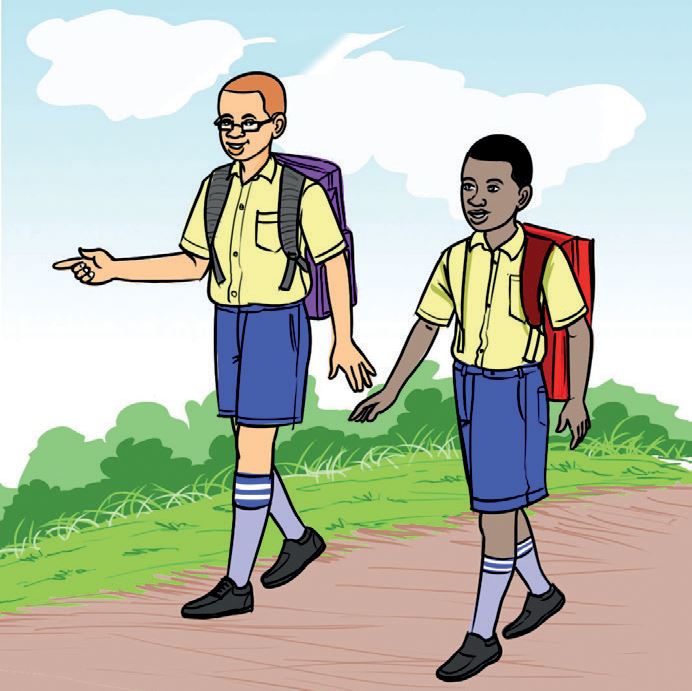
- List the changes that take place during pre-adolescence.
- Why do you think sharing experiences the way Osogo and Kirui did is helpful?
- With whom do you share your experiences?
Good grooming as a daily health habit
Keeping clean is an important part of staying healthy. For example, the simple act of washing hands before eating and after using the toilet is a proven and effective way of fighting off germs and avoiding sickness.
- List ways in which we can maintain good grooming as a daily health habit. Share your findings with the class.
- How does grooming affect our relationships with others at home and in school?
- How can we help our family members and friends in maintaining good grooming?
- Make posters highlighting the points you came up with and pin them in class or on the school notice board.
Activity 4
Discuss in groups. Share your ideas in class.
- What would happen if we do not observe personal hygiene?
- Which aspects of personal hygiene are more important to you as a boy or girl?
- Talk about other ways we can ensure personal hygiene as part of grooming during pre-adolescence.
1. Which learners are properly dressed?
2. Which pictures show poorly dressed learners?
3. How should the poorly dressed children improve?
Activity 6
In groups, read the following article written by Grade 5 learners in a school magazine.
Care of Clothes
The clothes we wear are a good indicator of our grooming. We should keep our clothes clean. Ironing clothes after washing keeps them free from creases. Always wash sports kit after games. Remember, clothes should never be stored when damp. Damp or wet clothes promote the growth of mould which destroys clothes. Clothes that are stored while still damp smell bad. Put mothballs in drawers and wardrobes to keep away moths that may damage clothes. Regularly air clothes that have been stored in drawers and wardrobes for a long time. We should always take care of torn clothes by mending them.
1. Sports kit is washed before games.
- True
- False
2. Moulds grow in moist clothes.
- True
- False
3. Mothballs attract moths, mice and rats.
- True
- False
4. Mending clothes extends their period of usage.
- True
- False
Digital activity
- In groups, search on the internet and watch video clips on personal hygiene for pre-adolescents.
- Watch it and take notes to share in class.
Activity 7
Under the guidance of your teacher, organise yourselves into a grooming competition. In groups, present to the class:
- Well combed and styled hair.
- Clean handkerchiefs.
- Short, clean hand and toe nails.
- Clean uniforms.
- Clean polished shoes.
Etiquette is about proper behaviour among a group of people.
In groups, list examples of etiquette within a group. Share your points with the class.
Notes
Having good manners means:
- Obeying rules at home, school and in teams.
- Being polite when communicating.
- Treating family, friends and teachers with respect.
- Being truthful and having integrity.
- Maintaining good hygiene and grooming.
- Setting boundaries and limits.
- Using technology wisely and safely.
- Being kind and warm at all times.
- Using good table etiquette.
Daily physical exercise as a healthy habit
- How do physical exercises benefit our bodies?
- What happens to our bodies when we do not exercise?
Notes
Everyone can benefit from regular exercise. Active children will have:
- Stronger muscles and bones.
- Leaner bodies.
- Less risk of becoming overweight.
- A lower chance of getting lifestyle diseases.
- Lower blood pressure and blood cholesterol levels.
- A better outlook on life.
Digital Activity
- In groups, find from the internet video clips on physical exercises.
- Watch them and share your observations in class.
- From the videos, note safety practices to be observed when doing exercises.
Healthy eating habits for a pre-adolescent
It is important to eat a variety of foods to be able to get good nutrition.
Activity
In groups, answer the following questions.
- What does variety in a diet mean?
- Study the pictures below. They represent a meal.
- Choose the correct food group from the select bar.
- Why are the food groups important for a pre-adolescent?

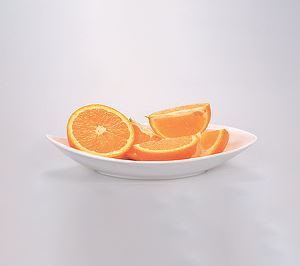
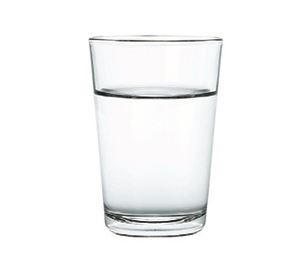
- Fill in the functions of different food groups.
FOOD GROUPS | FUNCTIONS |
- What is a snack? Why should you choose healthy snacks?
Notes
- Eat healthy meals everyday.
- Increase fibre in the diet.
- Decrease the use of salt and sugar.
- Drink plenty of water.
- Drink fresh fruit juice. Do not add sugar.
- Eat fruits or vegetables for a snack.
Appreciating healthy habits in pre-adolescence
Fun Time
Sing the song below.
Healthy habits,
Healthy habits,
Promoted by good grooming,
For pleasant pre-teens.
Healthy habits,
Healthy habits,
Promoted by healthy eating habits,
For healthier pre-teens.
- In groups, talk about the healthy habits you practise everyday.
- How do these healthy habits make your life better?
- Discuss how you can improve on the habits you already practise.
Notes
- Exercise regularly.
- Eat a healthy diet.
- Maintain a healthy weight.
- Get enough sleep.
- Brush and floss your teeth.
- Avoid the use of earphones. Listen to music at a reasonable volume.
- Learn ways to manage stress.
- Study and do your best in school.
- Maintain a good relationship with your parents, friends and teachers.
- Develop a good balance between school and social life.
- Pay attention to your moods and feelings.
- Do not be afraid to ask for help if you need it.
- Accept yourself.
- Do not bully other people.
Take home activity
Share with your friends and family what you have learnt in school about grooming.
Summary
During pre-adolescence, we may notice some of the following changes.
BOYS | GIRLS |
|
|
- Pre-adolescence occurs between.
- List some of the changes that take place during pre-adolescence in boys and girls.
BOYS | GIRLS |
- Which aspects of good grooming should one practice during the pre-adolescence period?
